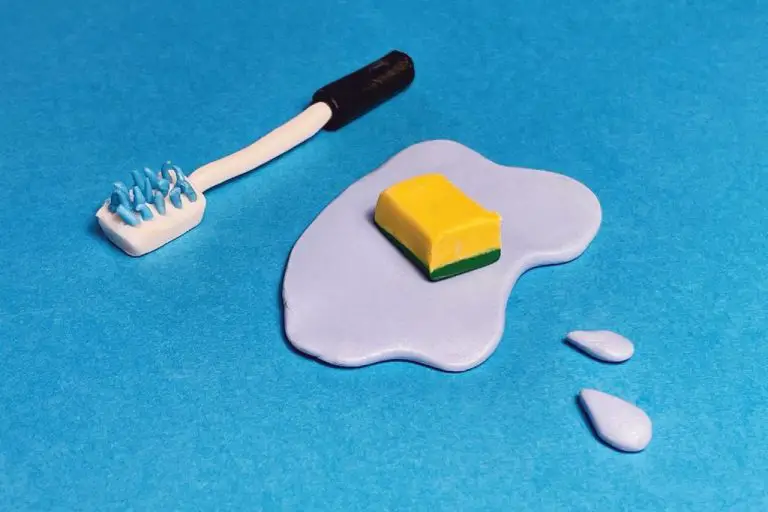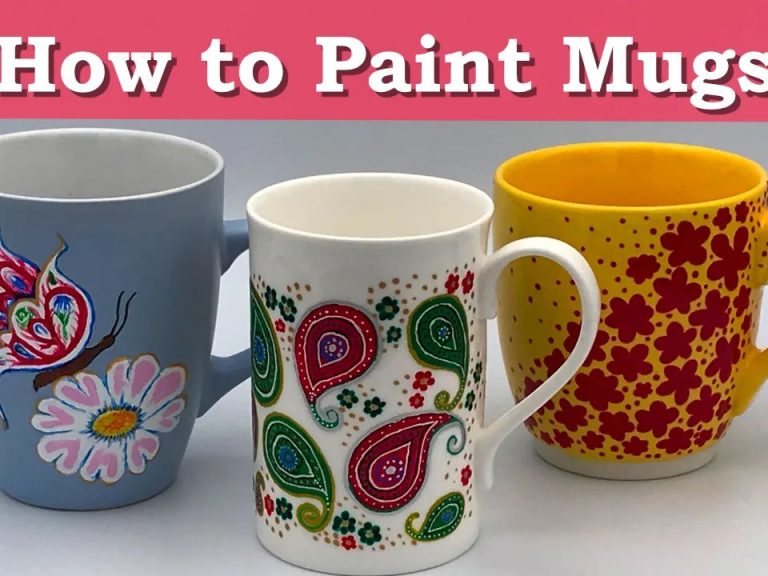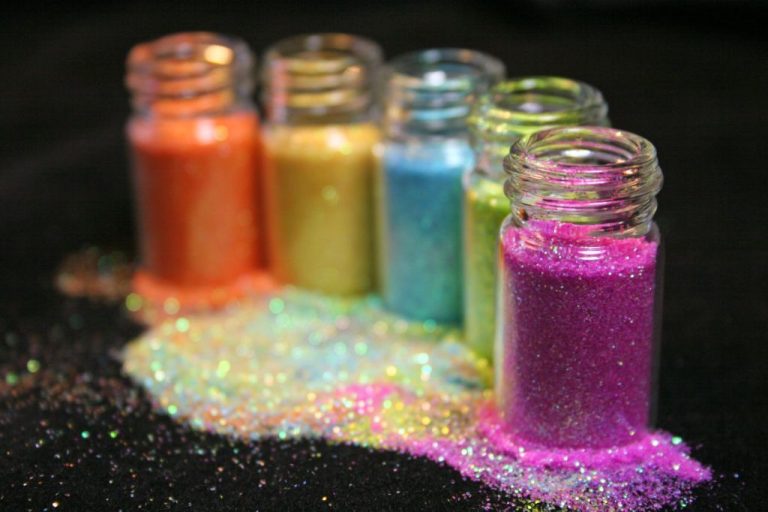Can You Color Clay With Food Coloring?
Polymer clay is an ever-popular material for hobbyists and crafters to create fun arts and crafts projects. It is a versatile, pliable material that can be molded into nearly any shape and then baked in a regular oven to harden it into a durable finished product. From jewelry to figurines and more, polymer clay enables imaginative DIY projects with professional-looking results.
One of the great aspects of polymer clay is that it can be easily colored for endless creative possibilities. While polymer clays come in standard colors like white, black, and terra cotta, many crafters like to color or marble their own custom polymer clay shades. A convenient way to add bright pops of color to polymer clay is by using regular food coloring. The vibrant colors and easy accessibility make food coloring a popular choice for coloring polymer clay at home.
Can You Use Food Coloring on Polymer Clay?
Yes, food coloring can be used to color polymer clay. Food coloring provides an easy, accessible way to color clay at home. Clay artists have been using food coloring to customize the color of polymer clay for years. As long as you use high quality polymer clay and follow a few tips, you can achieve beautiful, vibrant clay creations.
Advantages of Using Food Coloring
Using food coloring to color polymer clay offers some great advantages that make it a popular choice among crafters and artists. Here are some of the top reasons to consider food coloring for your polymer clay projects:
Food coloring is inexpensive and easy to find. Since food coloring is sold in most grocery stores and craft stores, it’s readily accessible and budget-friendly. Especially when just starting out, using food coloring allows you to color polymer clay without a big investment in specialized clay colorants.
Allows for creating custom colors by mixing shades. With a set of primary food colorings – red, blue, and yellow, you can blend them together to create a full spectrum of secondary colors. Mixing food coloring gives you the flexibility to achieve exactly the shade you want for your polymer clay.
Non-toxic and safe for polymer clay crafts. Food coloring has the advantage of being non-toxic, so it’s safe to use in arts and crafts. This makes food coloring a kid-friendly way to color polymer clay without worry of skin irritation or other health hazards.
How to Color Polymer Clay with Food Coloring
Coloring polymer clay with food coloring is an easy process. Here are the key steps:
With a bit of coloring and kneading, you can easily achieve vibrant custom polymer clay colors using widely available food coloring.
Tips for Best Results
When coloring polymer clay with food coloring, there are some tips to follow for achieving the most vibrant, even shades:
Use gel or paste forms of food coloring rather than the liquid. The thicker consistency results in more intense, saturated hues. The liquid food coloring can produce paler colors that are more likely to fade over time.
Start by adding just a small amount of food coloring and mixing it thoroughly into the clay. You can continue adding more color gradually until you achieve the desired shade. It’s better to slowly build up the color rather than overdo it from the start.
Avoid over-mixing the clay after adding the food coloring. While you want to mix thoroughly to distribute the color evenly, too much mixing can cause the clay to become sticky. Fold the color in with light kneading rather than vigorous stirring.
Following these simple tips will give you bright, vivid polymer clay creations that hold their color even after baking.
Limitations and Considerations
While using food coloring on polymer clay offers some advantages, there are also some limitations and things to keep in mind:
Food coloring can fade over time with exposure to light. The colors may start off very vibrant, but can become lighter and duller as the finished clay art is displayed. This is especially true for pieces that will be shown in direct sunlight. The UV rays can accelerate fading.
Food colors usually won’t create quite as vivid and intense shades as professional clay pigments that are designed specifically for polymer clay. So if you’re aiming for a very bold, dramatic color, standard food coloring may not achieve that.
Bleeding can occur if the clay is not properly cured/baked. The colors may run if baked at too low of a temperature. To prevent bleeding, make sure to bake the clay according to the manufacturer’s instructions until fully hardened and cured.
While food coloring can be convenient, inexpensive and easy to use, it’s good to be aware of these potential limitations when choosing your colorants and planning your polymer clay project.
Alternatives to Food Coloring
Although food coloring is a convenient and inexpensive way to color polymer clay, there are some good alternatives that provide certain advantages:
Professional polymer clay pigments and dyes – These are specially formulated for use with polymer clay. They create very vibrant, saturated colors that won’t fade or bleed over time. A small amount goes a long way. Some popular brands are Sculpey Premo Color Mixins and Kato Clear Polyclay.
Acrylic paints – Acrylics bond well with polymer clay and produce bright, lasting colors. They can be mixed to create custom shades. Acrylics are available in many finishes (pearl, metallic, neon, etc.). When adding acrylics, use soft body or fluid paints and dilute with water for best results.
Chalk pastels – Grinding up chalk pastels into a fine powder provides concentrated color that blends beautifully into clay. The soft, saturated colors don’t fade. Choose artist quality pastels over kid’s sidewalk chalk for more pigment options.
Eye shadow powder – Many polymer clay artists use single-pan or loose eye shadows to achieve striking effects. Eye shadows offer intense, shimmery metallic and iridescent colors. Just be sure to use only cosmetic-grade powders labeled as eye shadows.
Tips for Colors that Won’t Fade
If you want vibrant polymer clay colors that won’t fade over time, here are some tips:
Use more concentrated gel food colorings rather than standard liquid varieties. The thick gel consistency provides more concentrated pigment for richer, longer-lasting colors.
Mix food coloring with a liquid clay blender or softener first before kneading it into the clay. This helps disperse the color more evenly so it won’t leach out.
Bake clay at the right temperature and for the full time listed on the clay package instructions. Underbaking can result in colors fading, while overbaking may burn or darken colors. Following the guidelines ensures colors cure properly.
In addition to food coloring, you can also mix in artist-grade acrylic paints for very durable, fade-resistant polymer clay color. Just use paints meant for plastic and follow package directions.
Fun Project Ideas
Polymer clay colored with food coloring lends itself beautifully to all kinds of fun and creative projects. Here are some ideas to get you started:
Jewelry like beads and pendants – Shape your polymer clay into beads, pendants, charms and more. Add eyepins to turn beads into necklaces and bracelets. The color possibilities are endless!
Magnets, coasters and decorative items for the home – Make customized magnets for the fridge, one-of-a-kind coasters, wall plaques, ornaments and other decorative items to display around your home.
Miniature food items like tiny cakes and doughnuts – Sculpt amazingly realistic looking miniature cakes, cookies, doughnuts and other tiny polymer clay treats. These make for the cutest gifts and displays.
Conclusion
Food coloring is an accessible and non-toxic option for coloring polymer clay. It can be easily mixed into clay, either directly from the bottle or diluted with a bit of water first. This allows for creative custom color mixing to achieve a wide spectrum of desired shades and effects.
While food coloring does work for coloring polymer clay, it does have some limitations to be aware of. The colors may fade or change over time with exposure to light. Food coloring also may not produce as vivid or opaque results as professional polymer clay coloring products. Still, with reasonable expectations, food coloring can be a fun, inexpensive way to add color to polymer clay.
Overall, food coloring provides a versatile, user-friendly material for coloring polymer clay in beautiful, personalized ways. With some technique and care, it can be a great addition to any polymer clay project.



